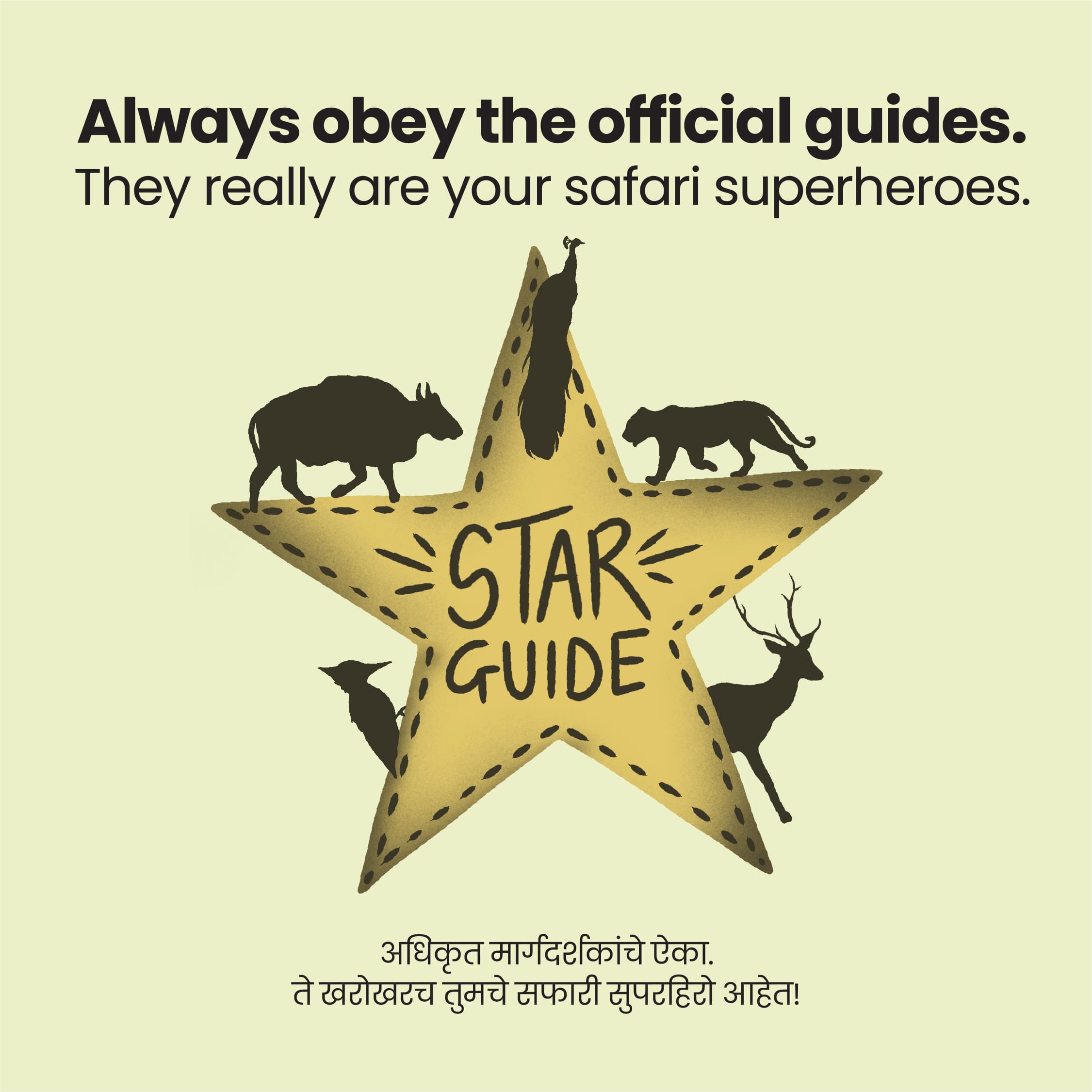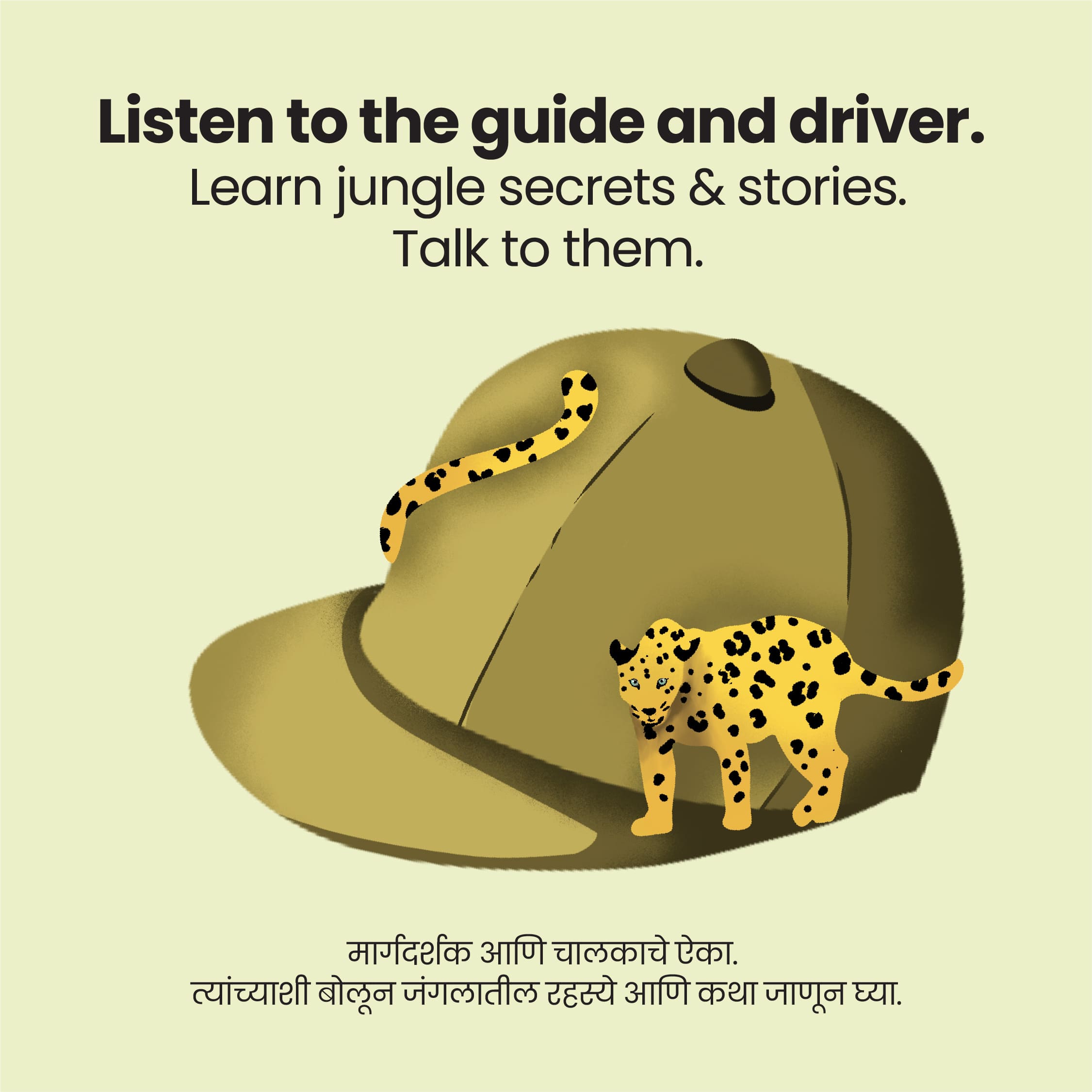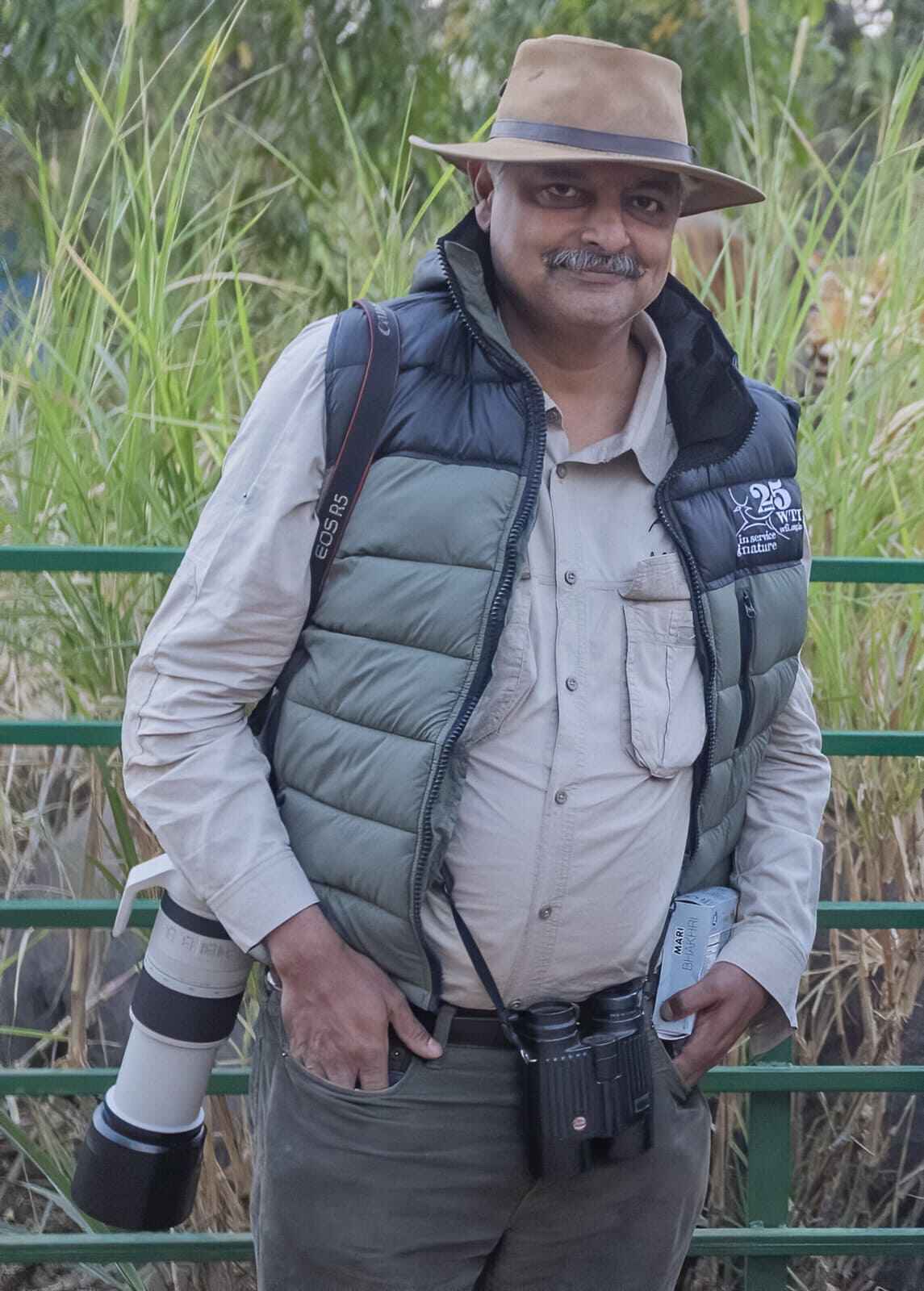The best safari is an ethical one!
Violation of any mentioned rules will
invite legal action and fine.




















I have visited Tadoba six times. However, I have never visited a forest to see a tiger. Not even before I came into the field of conservation. In fact, I started bird-watching in the ’80s. Even by watching birds, you can tell something about the health of the forest. At Tadoba, from my safari vehicle, I could record more than fifty birds! I saw four species of woodpecker. It shows that the proportion of canopy and large trees in this forest is really good. I saw a lot of fowls and quails during my two visits to buffer and I was happy to note that they were all healthy. Of course, it is not my well-studied conclusion or an estimate, but an impression that I had after the little time I could spend in the limited area.
Usually when we talk about the health of the forest we look at the count of the herbivores. That is because our thought process is tiger centric. There are different ways of looking at the forest. Tiger is just one of them. For white-necked woodpeckers, you don’t need herbivores, but you need large trees with a certain size of gut. If you don’t have such trees, the entire forest will die. The presence of such trees indicates that the forest is healthy.
One of the most talked about topics is the pressure of tourism in tiger reserves. Many years ago when I visited Tadoba, I witnessed that pressure. It was one of my bad experiences. However, this time, I am glad to see the change. Tourism is being managed properly. The guides and drivers are more disciplined. They knew their job well. I saw the guides wearing the tag ‘Star Guide’. Later the Field Director explained to me how the guides are being trained continuously and how they are graded every year according to their knowledge and skills. Such healthy competition among the guides to get a five-star grading is indeed an appreciable initiative.
Another thing I was very impressed with was the number of female guides I saw here. My guide Shehnaz seemed like a tigress to me! Also, I noticed that the number of women within the forest staff is very good. The best part is that they are actively doing their job of protecting and monitoring wildlife and forest.

Talking about tourism, I am aware that the number of tourism zones and gates here have been increased. It is a good development. I strongly believe the best strategy is to maximize the area where tourists can go, minimize the number of tourists in an area at a given time and keep those areas rotating. This way people will get to see different parts of the forest, animals get their rest time, and the zones closed to tourism get time to regenerate. Automatically the pressure of tourism also shifts from one zone to the other. I don’t think any tiger reserve in India is doing it.
I think the local communities’ participation in conservation is very important. There is no other way, especially in a country like India having a population of 140 crore people. One-third of poor people are in India. Hence no conservation can happen unless you involve people. We must provide them with livelihood opportunities. As a government agency, it is the duty of the forest department to take care of the people while protecting the forests and wildlife. Maharashtra has always been good at that compared to many other states. I believe Maharashtra provides the highest ex-gratia payment in case of human death in a wild animal attack. That is extraordinary! Similarly, schemes like providing cooking gas and eliminating the dependence on forests for firewood are also very practical and progressive ways of involving local communities.